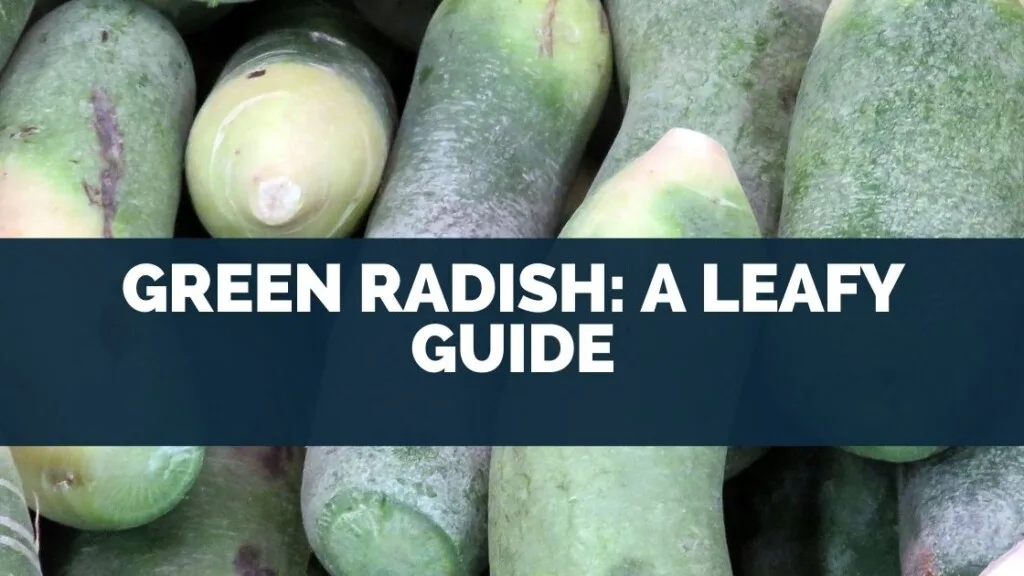
Green radish is good for your body. It grows above ground from the well-known root vegetable. Radishes are grown all over the world, but they are mostly grown in milder and cooler places.
The leaves of radish come in a wide range of sizes and shapes, from small and round to long and serrated. They make great cooking vegetables.
Table of Contents
What Are Green Radish?
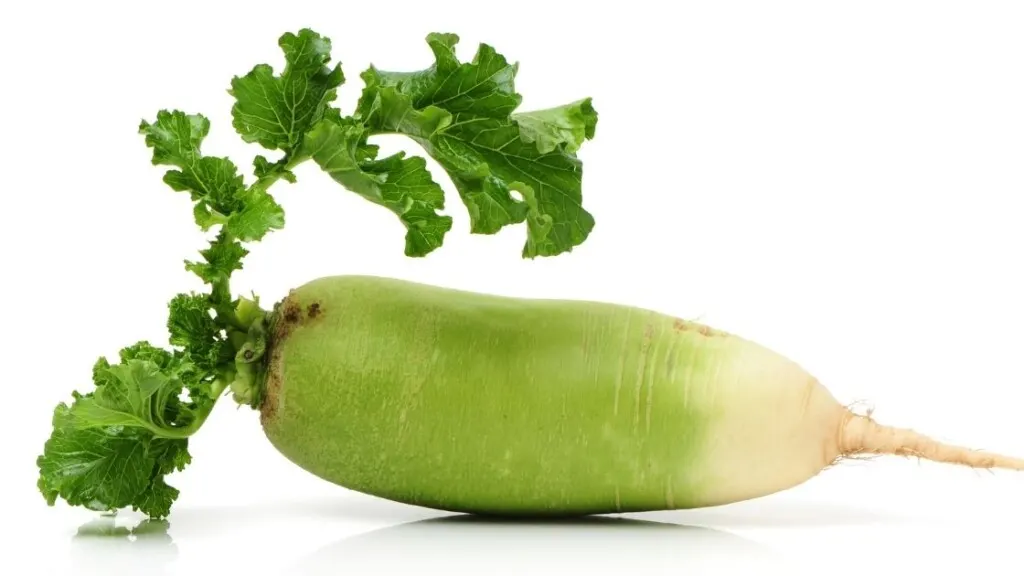
Green radish has a leafy top. They are often sold whole or in bags with their tops cut off. In order to know how recently a batch of radish greens was harvested and cared for, look for greens that look fresh and healthy.
Green radish is cheap and can be eaten raw in salads or cooked.
They only need to be washed before they can be eaten.
Is Green Radish Nutritious?
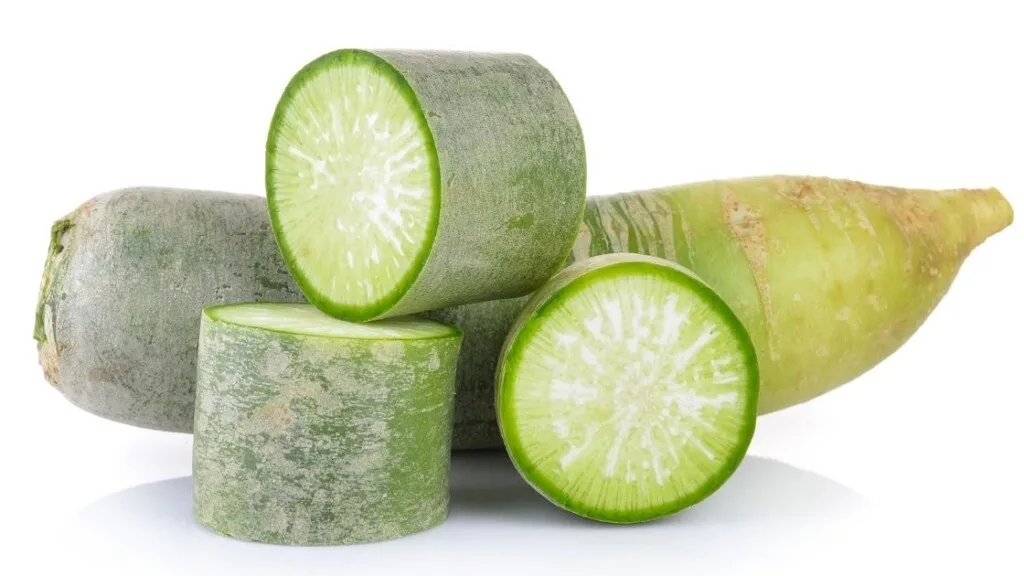
Green radish is similar in nutritional value to their roots, but they contain slightly more calcium and vitamin C than the other parts of the plant.
They’re low in calories, high in fiber, and packed with antioxidants. Green radish provides 10% of your daily requirement for folate, 4% of riboflavin, 9% of magnesium, and 10% of vitamin C (15% for smokers).
They’re also a good source of thiamine, niacin, iron, potassium, copper, and manganese.
How to Use Green Radish? (Cooking, Eating)
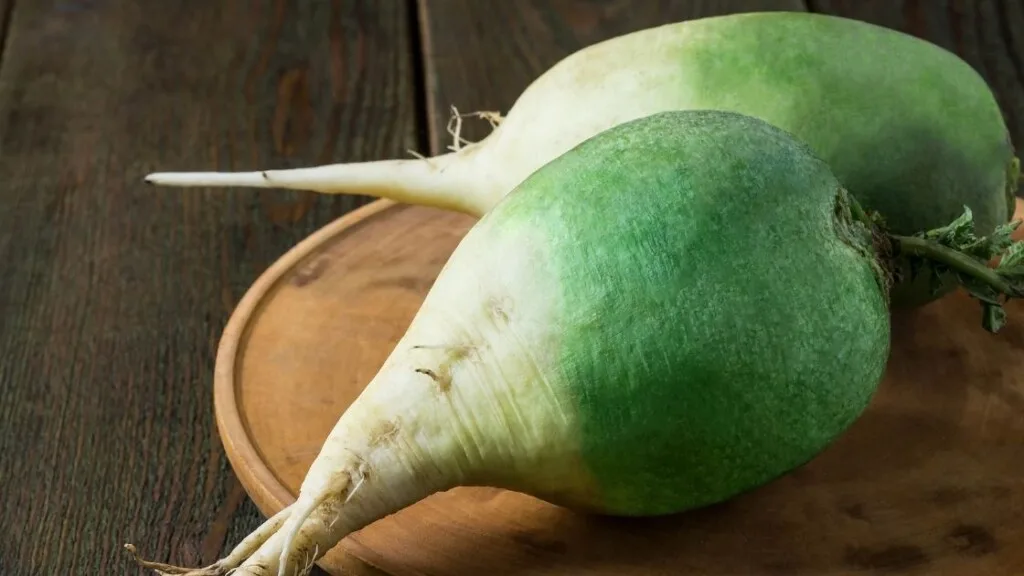
Green radishes can be eaten alone or in a dish with their roots. It is possible to eat the greens of young radish without cooking them.
They can be used in salads or to make pesto. Even though mature green radish is a little fuzzy, bitter, and tough when raw, it is a great vegetable to cook with.
Reserving the green radish roots is a good idea. To get rid of any soil or grit that has stuck to the leaves, wash them very well.
Dry the greens thoroughly before chopping them for your recipe. Greens are now ready to be used in cooking.
There are many ways to add green radish to your curries, soups, stews, quiche, frittata, and casseroles to make them look and taste better.
They can also be sautéed, blanched, braised, or steamed, just like kale, Swiss chard, or turnip greens.
What Does Green Radish Taste Like?
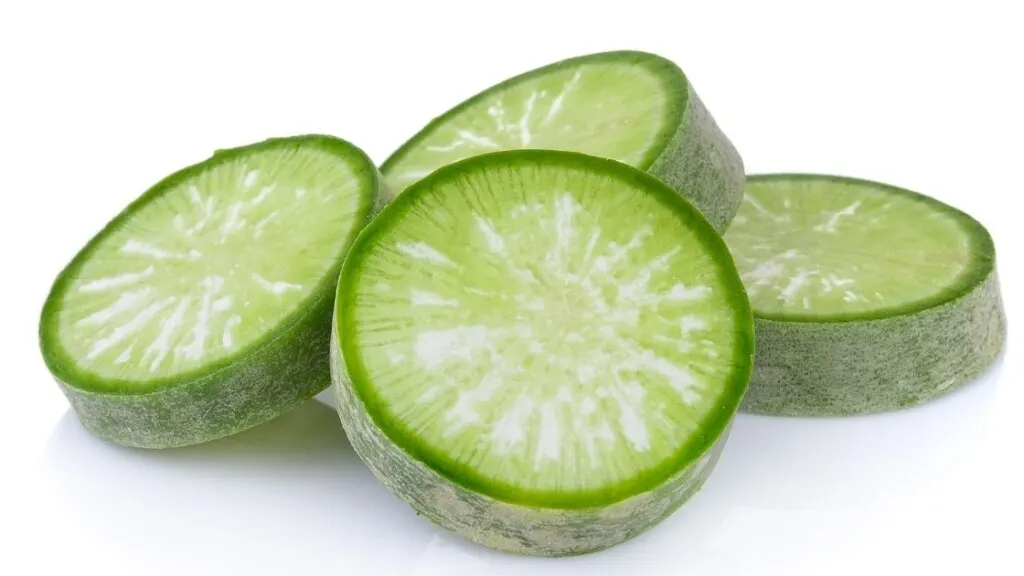
Green radishes have a flavor that ranges from mildly vegetal to earthy and a little spicy, with a pleasant bitterness at the back of the taste.
It tastes kind of like turnip or mustard greens, but they’re usually a little smaller in size.
Cooking the greens and adding salt and acid to the final dish can help make the dish less bitter.
Health benefits of green radish
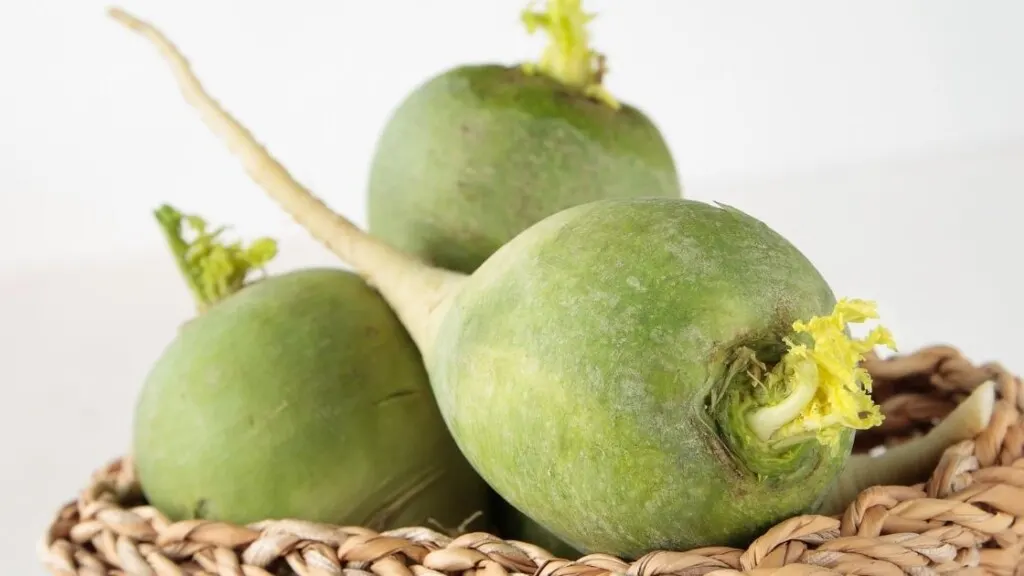
Prevents birth defect
A recent study found that green radish may be able to help lower the risk of neural tube defects, or birth defects involving the brain and spinal cord.
The team took a look at the chemical compounds in the leaves of these little green vegetables and found that they have strong antioxidant properties.
They also have anti-inflammatory properties that are helpful in preventing heart disease.
It’s important to note that this is just one study, so it’s too soon to tell if green radishes will offer any protection against birth defects for pregnant women.
But given their health benefits, it’s possible these tasty veggies could even help protect pregnant women from other diseases as well!
Helps in weight loss
Green radish is an excellent weight-loss food because they are low in calories and high in fiber.
Fiber helps you feel full faster, which can help with weight loss. A single cup of raw green radish provides 5 grams of fiber, which is about 10 percent of the daily value.
This fills your stomach quickly with very few calories. Green radishes also contain potassium, which helps balance fluids and helps the heart beat more efficiently.
Potassium also aids digestion and reduces headaches caused by dehydration.
One of the most important benefits for dieters is that green radishes are low-calorie, crunchy vegetables that fill you up without adding too many calories to your intake.
Boost immune system and fight inflammation
Green radish is a great source of vitamin C and provides your body with dietary fiber and potassium. They also have hefty amounts of vitamin A, iron, calcium, magnesium, protein, and phosphorus.
The leaves are particularly high in vitamin K1.
The deep red color of radish leaves is due to their high anthocyanin content, which has been shown to have many health benefits.
Anthocyanins are powerful antioxidants that can help prevent heart disease by preventing oxidation in the blood vessels that lead to atherosclerosis.
Some studies suggest that anthocyanins may also have anti-inflammatory effects because they are structurally similar to aspirin.
Can You Eat Green Radish Raw?
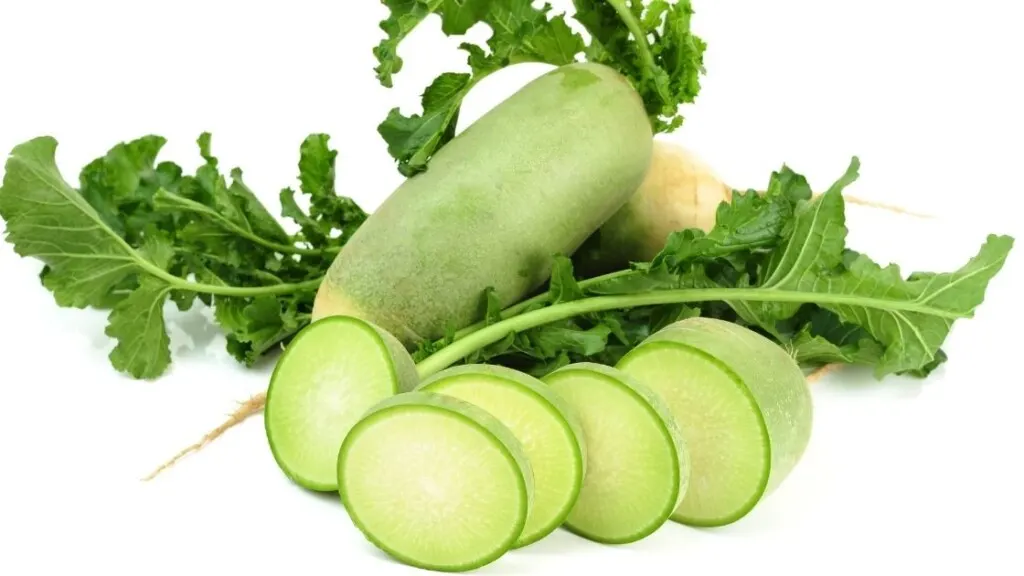
Yes, you can eat green radish greens raw. Many home gardeners compost the roots of the plants after harvest, keeping only the leaves for eating.
They may be used in salads or tucked into sandwiches instead of lettuce. The green tops are similar to many other leafy green cooking vegetables like collard greens, kale, or Swiss chard.
How to Grow Green Radish?
You can grow green radish indoors in pots on a sunny windowsill. When planting green radishes outdoors, choose an area with light shade and rich, well-drained soil.
Sow seeds directly in the ground eight weeks before your first expected frost date.
Keep the green radish bed well watered until harvest time.
You can also grow green radishes in containers, just like other root vegetables. Use a 1-gallon pot for each plant, and fill it with moist potting soil or seed starting mix.
Plant green radishes 1/2 inch deep and 3 inches apart, then cover them with 1 inch of soil.
Water the green radish bed until it’s evenly moist, then keep the green radishes well watered throughout the growing season.
Green radish is less likely to bolt or become bitter when exposed to cold weather, so they’re a good choice for green manures and cover cropping.
For best results, green up green radish green in the fall after harvesting your root vegetables.
Like most green leafy vegetables, green radishes are best harvested when young and tender.
Green radish is also a good candidate for succession planting since it recovers quickly from harvest and can be ready to eat again in as little as four weeks.
How long does green radish last?
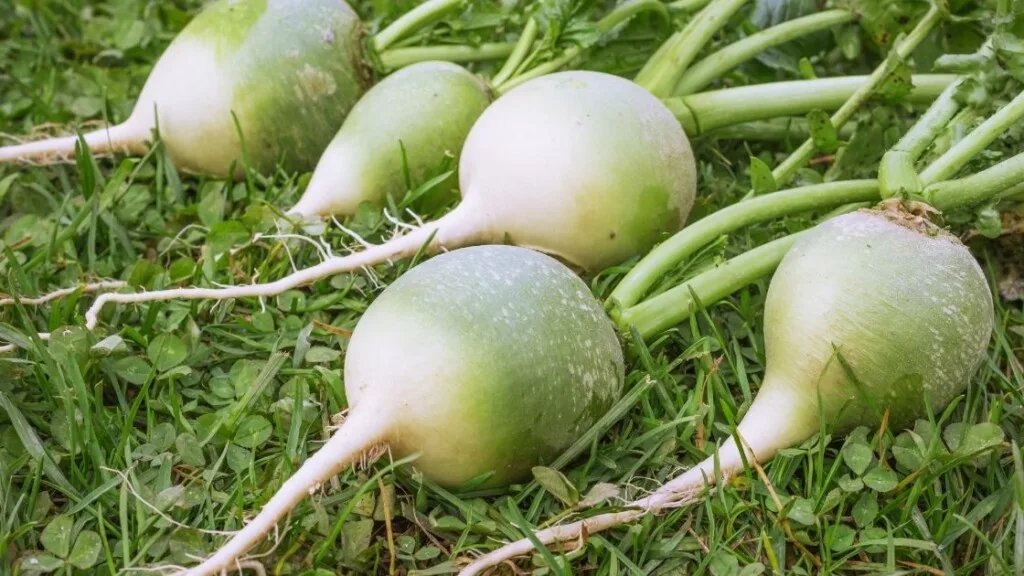
Green radish has a shelf life of four to seven days, so use them quickly after harvest. Store green radish in the crisper drawer of your refrigerator for up to one week.
How to store green radish?
To keep green radishes fresh longer, wrap individual green radishes in dry paper towels and store them in an open container in the refrigerator.
Keep green radishes dry and cool to prevent spoiling, but don’t wash or coat them with oil before storage because this can cause them to rot faster.
Final thoughts
After reading the benefits and uses of green radish, I hope you’re excited to incorporate them into your diet. Green radish is an excellent source of vitamin C, vitamin K, folate, calcium, iron, and potassium.
While you can eat green radish raw for a tasty snack or enjoy them in salads or soups, cooking them with other vegetables is always a great way to enhance their flavor.

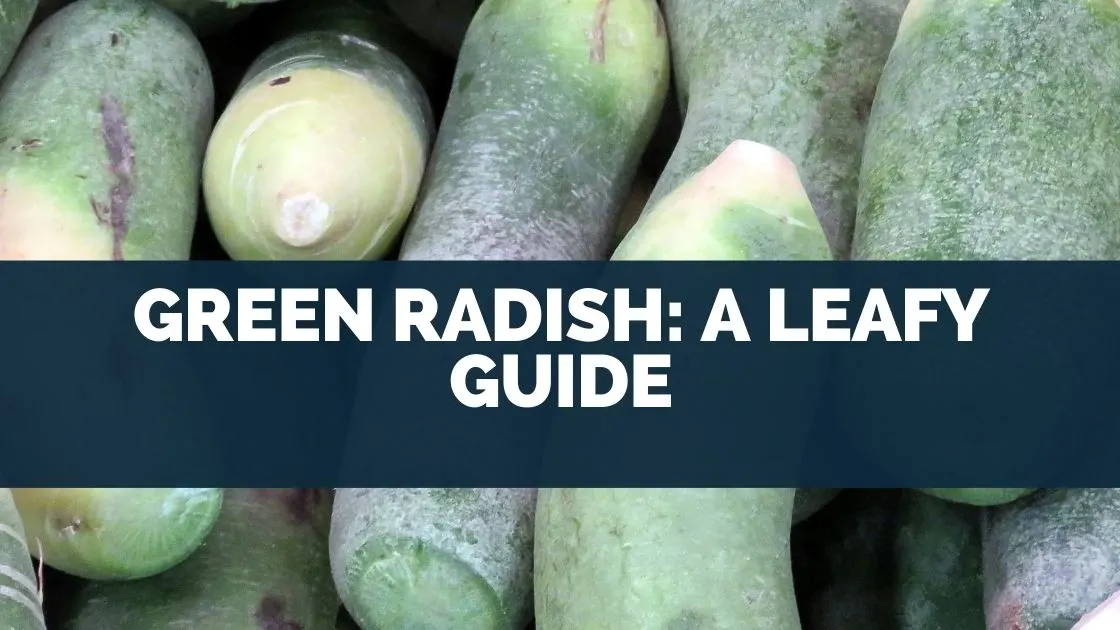
Leave a comment